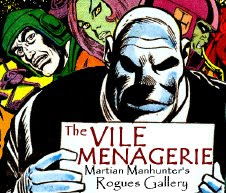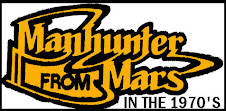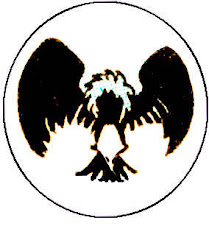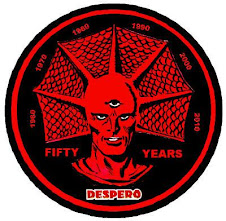
The Martian Manhunter debuted in the November 1955 cover-dated Detective Comics #225, replacing the nautical sleuth strip of Captain Compass with something more popular in the period, science fiction. The comic book industry as a whole was in a deep slump, and the only super-hero that was still selling significant numbers was Superman. The start of the Silver Age of Comics is usually considered to be the publication of Showcase #4, the debut of the revamped Barry Allen Flash, arriving just under a year after J'onn J'onzz. Other super-hero books cover-dated September 1956 included Action Comics, Adventure Comics, Batman, Detective Comics, Superboy, Superman, and Superman's Pal Jimmy Olsen, which also featured strips for Congo Bill, Tommy Tomorrow, Aquaman, Green Arrow, and Roy Raymond. Wonder Woman & World's Finest ran on a different month. Although the Flash was a modest success, a year later, nothing much had changed in this publication schedule. Even two years later, the Flash had barely graduated to his own title, as had Superman's Girl Friend, Lois Lane, while Green Lantern Hal Jordan had only just debuted in 1959's Showcase #22.
Click To Enlarge

The true game changer came in February 1960, with The Brave and the Bold #28, and the arrival of the Justice League of America. Three and a half years after the Scarlet Speedster had made the scene, the Flash was seven issues into his eponymous title, while the Challengers of the Unknown had a dozen under their belts. The Emerald Gladiator was still a freshman paying his dues on the anthology circuit, while back-up strip veteran Aquaman made his U.S. cover debut with the team, as did the Manhunter from Mars. Four months after their bi-monthly anthology bow, the JLofA were given their own series. A year out from the JLA premiere, Green Lantern had his own eponymous title, a volume that would run eighty-nine issues without a break. Aquaman was given a Showcase try-out, which would spin-off into a solo ongoing that would outlive the decade. Progressing further into 1961, the Thanagarian Hawkman arrived for anthology appearances before moving into a solo book, as would the Ray Palmer Atom. While not super-heroes, Adam Strange and Rip Hunter were active headliners. Mark Merlin was added as a regular feature to House of Secrets, and other anthologies added Star Hawkins and Space Ranger. Elongated Man and Kid Flash were turning up irregularly, while Supergirl took a regular spot in Action Comics.
Click To Enlarge

The August 1961 cover-dated Secret Origins #1 reprinted key tales of the Superman/Batman team, Adam Strange, Green Lantern, Challengers of the Unknown, Green Arrow & Speedy, Wonder Woman, the Flash, and finally, the Manhunter from Mars. Editor Jack Schiff had overseen the creation and/or promotions of Aquaman, the Challengers, and other anthology features, but did not seem to value J'onn J'onzz. As Julie Schwartz and Mort Weisinger were growing their stables and sales with super-heroes, Schiff was content with his adventure/mystery strips and handing over his super-heroes to his former assistant, George Kashdan. By November dated releases, Archie Comics were offering the Fly and the Jaguar in their own books, while "Marvel Comics" launched with Fantastic Four #1.
Another year passed. The Legion of Super-Heroes were in Adventure Comics, Thor starred in Journey into Mystery, and the Hulk had his first short-lived run. Another year brings Spider-Man, Doctor Solar, Magnus Robot Fighter, The X-Men, and the Doom Patrol in My Greatest Adventure. Iron Man was in Tales of Suspense, Ant-Man then Giant-Man & Wasp were in Tales to Astonish, and all three appeared in The Avengers. Most of the super-heroes introduced in the Silver Age survived up to this point, and many thrived.
Click To Enlarge

An exception was the Batman titles, while had floundered throughout the 1950s, and were thoroughly uncool for the 1960s. That's why Jack Schiff was finally forced off them and replaced as editor by Julie Schwartz. Ahead of their eviction, Schiff finally gave Green Arrow and Martian Manhunter a dual try-out in October/November 1963's The Brave and the Bold #50. Now, the JLA had left that bi-monthly title twenty issues prior. The Fly had been going since 1959, would continue until 1966, and lived longer still as the anthology Mighty Comics. Adventures of the Jaguar was pretty much done by this point. The Atom was nine issues in, the Challengers thirty-four, Fantastic Four nineteen, Green Lantern twenty-four, Metal Men four, Lois Lane forty-four, Aquaman eleven, and the big one, Justice League of America, well into its twenties.
Martian Manhunter & Zook didn't move into The House of Mystery cover spot until June 1964, where they would remain less than a year before surrendering to also-ran status for the new lead, "Dial H For Hero." Editor Schiff also offered Eclipso and Prince Ra-Man to House of Secrets. Green Arrow was even less lucky, losing his back-up strip in World's Finest Comics in 1964 and making do with JLA and guest appearances until Schwartz teamed him up with Green Lantern, Dennis O'Neil, and Neal Adams in 1970.
Click To Enlarge

Superman is an American icon, as is Wonder Woman, but the latter more as a survivor than victor. The first volume of the Flash lasted until the mid-80s, and DC has never gone for longer than a few months between series featuring Barry Allen or Wally West. Green Lantern has had less consistency, but he and Green Arrow shared a title for much of the 70s, and each has managed to support their individual books since the '80s. Aquaman has had worse luck, but turned up in one title or another for adventures until the '80s, and has mostly had eponymous series ongoing since the '90s.
Jack Schiff managed to push Batman to nearly the point of cancellation, but the Dark Knight was salvaged by Julie Schwartz, and then Batmania happened. The Caped Crusader is routinely treated as the greatest of super-heroes across all media today. Schiff gave away Aquaman, who then received his own cartoon, and remains one of the most recognizable heroes DC owns. Thanks to Schwartz's later development of Green Arrow, that character is the star of his own current TV show, while Green Lantern got a feature film.

Schiff kept Martian Manhunter, held that card until it was of little use in 1964, and half-heartedly played it until folding in 1968. Julie Schwartz was long past bothering with J'onn J'onzz. While Denny O'Neil revitalized Hal Jordan and Oliver Queen, he only trotted the Alien Atlas out every few years in the '70s, usually with no small amount of contempt and abuse. The character didn't rejoin the DC Universe proper and regular until 1984.
Jack Schiff commissioned thirteen years worth of Manhunter from Mars strips across 13 years and two titles. Unlike the more cutthroat Julie Schwartz, Schiff was loyal to his creative team right up until the end. That's honorable, and Martian Manhunter fans should be grateful for that. At the same time, Schwartz believed in telling sci-fi stories for precocious kids, and kept his stable fresh. Schiff was slow to respond to changing times, failed to capitalize on the opportunities of the Silver Age, and maintained the Manhunter strip as simple juvenile fantasy until at least 1966, with the introduction of VULTURE. We are indebted to Schiff, but his Manhunter is unrecognizable to modern audiences, who seem to have embraced the character in spite of his beginnings. Sometimes it's happier to think about what could have been under more dedicated, forward thinking hands. Perhaps then the Alien Atlas could truly have been a contender, instead of the Pete Best of the JLA.






























4 comments:
Glad to see a post chronicling a history of the Martian Manhunter in such great detail. I didn't know about the intricacies between Schiff and Schwartz.
And I never knew about Captain Compass. I think that's a character that could be re-introduced to the modern age, with the right writer. It could be kind of fun, especially in an all-ages title.
I never knew about that Secret Origins book from 1961, but it's a neat little snapshot of what was going on then, and a kind of "what could have been." (Also, when Adam Strange shows up here, let alone in the same book at J'onn, I'm always happy.) But it's saying something that a character who started out as a detective, then became a sci-fi/fantasy superhero has endured so long. Compared to everyone else on that Secret Origins cover, that's actually quite impressive. As a foil to J'onn, Adam Strange didn't undergo changes like that, had a stellar artistic team, a strong element of human drama to his stories, and now he exists on the fringes of the DCU as a what...C-lister? D-lister? (Not counting the impact, if any, of the JL United book.) But it shows you how some characters (like Strange) can't transcend their genre. J'onn could be a spy, a detective, a superhero, and still endure--a literal and literary shapeshifter. Not every character can do that. Lucky for GL, being a space cop is a pretty enduring concept, and so is being able to run really fast.
Granted, J'onn had his membership in the JLA to raise his profile, but look at all he's been through, and he still has a pretty loyal and sizable fan base (contrary to what that Goyer guy says...) Ironically, Batman has had so many varied incarnations, too. How he managed to become #1 is beyond my knowledge, but I think it's impressive that a less-popular character like J'onn could have his character tweaked so much and still keep going.
I don't think there's any inherent superiority in Martian Manhunter's premise over Adam Strange's. J'onn J'onzz became a super-hero at the dawn of that genre overshadowing the entire comic book industry, and his co-founding the JLA meant nerds would always return to him in time. Adam Strange was purer science fiction/fantasy without those direct ties to the super-heroes, so he was marginalized.
I do worry that the rising prominence of Alanna Strange might mean a "gender-swap" sending Adam to the fridge to replace Barry Allen as whitebread super-saint.
Well, Adam Strange's premise wasn't changed, but J'onn's was, and J'onn became more popular, which is kind of ironic. And a compliment to J'onn's appeal. But like you said, being part of the JLA helps, too.
I haven't read any of JLU...is that what's happening? Ahhhhhh. That would be tragic. But I guess someone has to be the sacrificial lamb...or at least, that is DC's logic. Adam Strange is one of those characters who always has luck on his side and makes it through any scrape. When he gets knocked down, it really, really hurts.
Anj at Supergirl Comic Box Commentary seems to like it. I'll likely order the trade.
Post a Comment